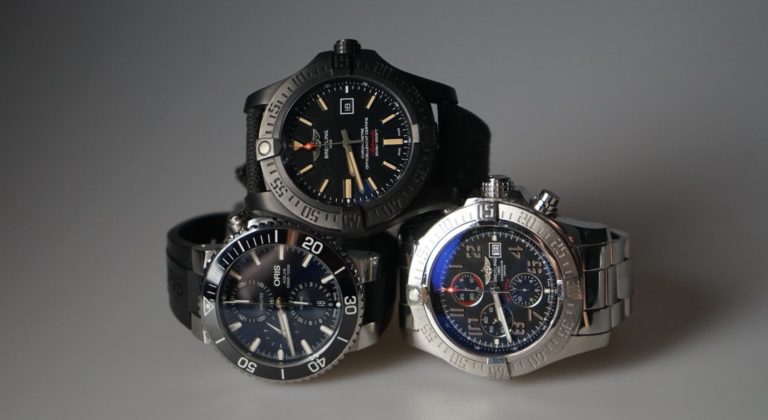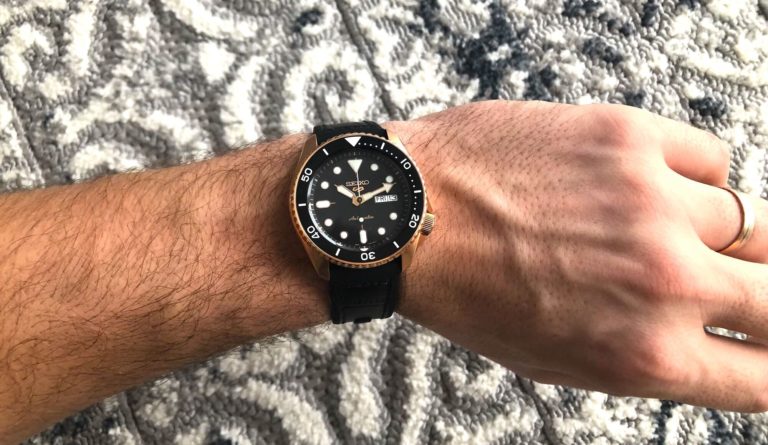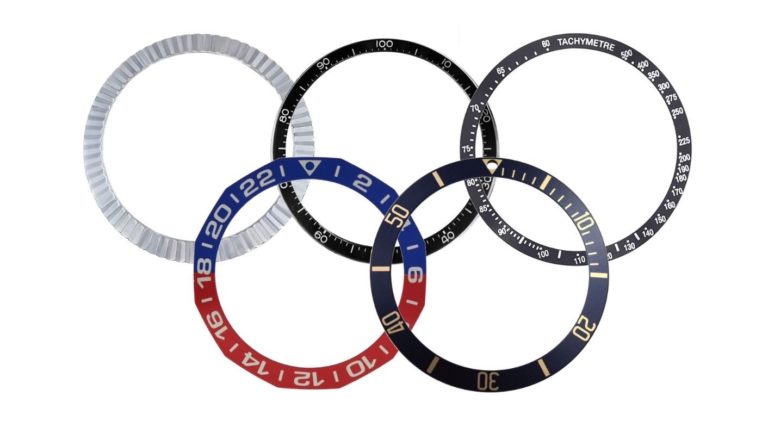Affiliate Disclosure: As an Amazon Associate I earn from qualifying purchases. Details
Water resistance is one of the most important factors to consider when purchasing a watch, especially if you plan on using it for activities such as swimming, snorkeling, or diving.
Therefore, it is essential to know what water resistance on a timepiece means.
However, what makes it complicated is that the resistance rating isn’t always exactly what it says – there are a lot of misconceptions and ambiguity to this simple number.
In this article, we will explain everything you need to know about the watch water resistance rating. So, whether you are shopping for your first timepiece or just want to learn more about this feature, read on!
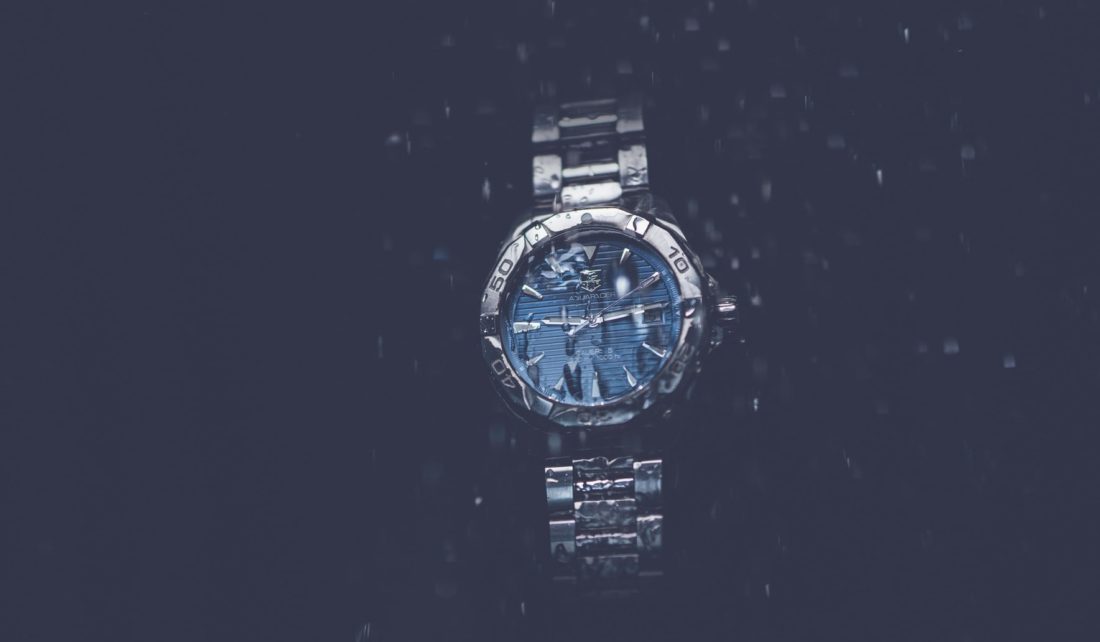
Water Resistance on Watches
The watch’s water resistance rating indicates how much pressure the watch can withstand before water seeps in. It’s usually measured in ATM (atmospheres) or meters of depth, but other units are used as well, such as feet and bar.
The water resistance rating is usually marked on the caseback of watches but sometimes features on the dial as well.
So, what does an ATM rating mean?
One atmosphere (1 ATM) is equivalent to the air pressure at sea level. So, a watch with a water resistance rating of 10 ATM can withstand air pressure of up to 10 atmospheres, or 100 meters (about 330 feet) underwater.
Most watches have a water resistance rating of between 30m (3 ATM) and 300m (30 ATM), but there are some that go up to 1,000m (100 ATM).
Water Resistance ATM | Bar | Meters | Feet |
|---|---|---|---|
3 ATM | 3 bar | 30 meters | 100 feet |
5 ATM | 5 bar | 50 meters | 165 feet |
10 ATM | 10 bar | 100 meters | 330 feet |
20 ATM | 20 bar | 200 meters | 660 feet |
30 ATM | 30 bar | 300 meters | 1,000 feet |
50 ATM | 50 bar | 500 meters | 1,650 feet |
100 ATM | 100 bar | 1,000 meters | 3,300 feet |
So, in theory, a 30m water-resistant watch should handle up to 30 meters (100 feet) underwater without getting wet inside.
However, in reality, the story isn’t quite like that.
What Does It Actually Mean?
What a “water-resistant” rating on a watch actually means is that a sample of brand new models have received a pressure test in still water for a limited period of time. As a result, not every watch goes through the procedure.
To take the matter further – water-resistant watches haven’t been tested in real-life conditions, i.e., in salty and moving water, without considering the corrosion, the strap attachment, or magnetic and shock resistance.
Therefore, the water resistance rating isn’t exactly what it says.
The reality is that a 30m water-resistant watch will most certainly fail 30 meters deep in the ocean, as will a 50m and a 100m timepiece in respective depths.
So, “water-resistant” means the watch is resistant to water to a certain degree but is not “waterproof.” It may withstand one-time pressure in the stated depth, but that’s about it.
It is important not to mix the terms water-resistant and waterproof. They are two very different terms with different meanings.
What Is a Waterproof Watch?
When a watch is waterproof, it is sealed from the water intruding into the mechanism. Such a watch has been rigorously tested and comes with watertight gaskets that prevent the water from entering.
So, a waterproof watch with a 200m rating ensures the timepiece can withstand the pressure in real-life conditions 200m deep in the ocean.
However, it must be noted that entirely waterproof watches do not exist because, under certain conditions, anything can happen. Therefore, the term which was used quite extensively earlier is no longer in use in the industry.
Though, the general public still unofficially refers to water-resistant and waterproof watches separately. And what is referred to as a waterproof watch is a professional dive watch with all of its characteristics.
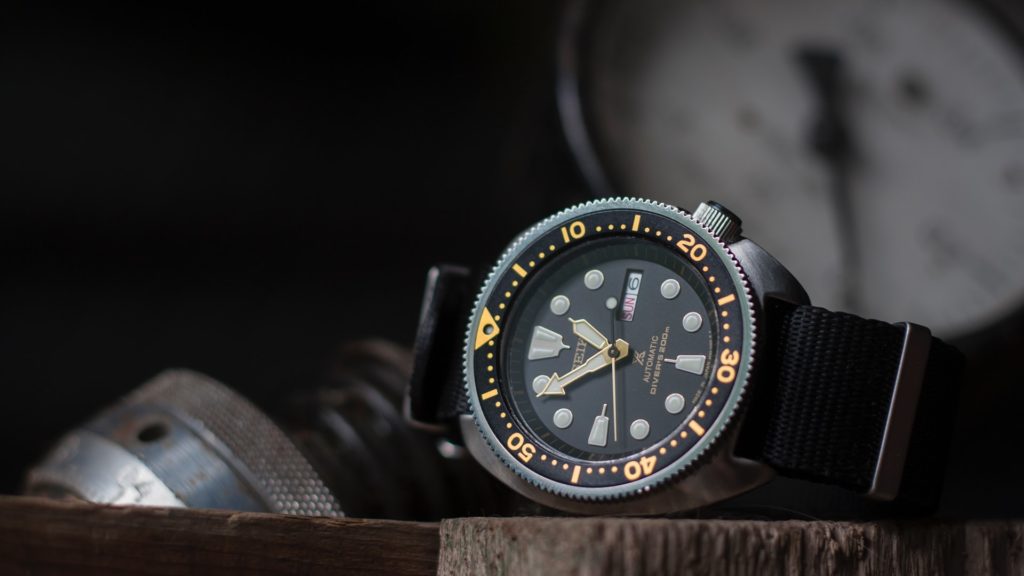
But how to know if a watch is simply water-resistant or waterproof? Because besides professional divers also exist dive-inspired watches that look like professional ones but are not suitable for deep diving.
The truth is that differentiating between a waterproof and a water-resistant timepiece isn’t easy visually because the writings don’t often tell much or are ambiguous.
Therefore, it is best to check the watch description provided by the reseller or visit the watch manufacturer’s page for more information.
However, some watches can be instantly identified as waterproof – they have the writing “Diver’s,” followed by the number. Such timepieces with the Diver’s marking are ISO 6425 watches for professional diving.
But what exactly is ISO 6425?
ISO 6425 & Dive Watches
ISO 6425 is an international standard for dive watches that was introduced in 1996 by the International Organization for Standardization (ISO). This standard specifies requirements for watches intended to be used underwater.
The most important one is that it must be at least 100 meters water-resistant, which means that it must be able to withstand pressures up to 10 ATM (100m) without failing. The truth is that the vast majority of dive watches sport at least a 200m rating, with only a few 100m ISO divers available.
Other requirements include the existence of a time indicator (unidirectional bezel), luminosity, corrosion test, and resistance tests against physical, magnetic, and thermal shocks.
In other words, ISO 6425 dive watches are professional-grade timepieces that can be submerged to specified depths.
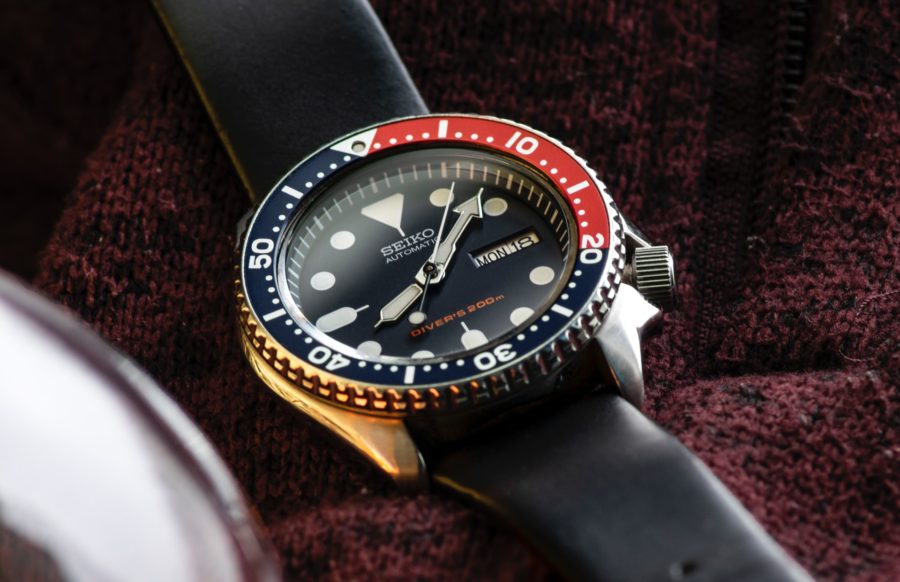
However, the ISO 6425 standard is not compulsory for watch companies to determine dive watches. Instead, many have opted against going for the recognition but conduct their own tests.
Several luxury brands, including Rolex and Omega, carry through similar tests, if not even more rigid ones. Also, several affordable Swiss brands don’t carry the ISO recognition but instead state of being in compliance with their own testing.
Therefore, ISO 6425 has several alternatives of how to determine the so-called waterproof watches.
Various Water Resistance Ratings Explained
Now we know that if a watch is “waterproof,” it will withstand the stated water pressure.
But what about water-resistant watches that aren’t waterproof? To what extent can, for example, a 30m water-resistant watch be in contact with water? Or what about the 200m watch?
Although water-resistant watches are not waterproof to indicated depths, they still can be waterproof to some extent, depending on their resistance levels and the activities they are used for.
30m (3 ATM) Water-Resistant
3 ATM, or 30 meters (100ft), is the lowest water resistance contemporary watches feature. The rating guarantees protection against splashes of water and light rain. It means the watch withstands only mild contact and should be kept away from the water as much as possible.
50m (5 ATM) Water-Resistant
50m of water resistance guarantees you a carefree watch wearing in the rain and during hand washing. Also, the chances of ruining the watch during swimming are pretty low. However, it still isn’t advisable to use a 50m water-resistant watch for frequent swim sessions.
100m (10 ATM) Water-Resistant
Now, this is the rating that allows you to wear your watch for swimming, snorkeling, and other surface water sports. The timepiece withstands long sessions in the water, as long as you don’t submerge it deeper than 1m (3ft).
200m (20 ATM) Water-Resistant
200m water-resistant watch is spot-on for swimming and snorkeling, but also for recreational diving to depths up to 40m (130ft). However, there are still no guarantees that the watch will withstand the pressure 40 meters deep because it very much depends on the watch and the manufacturer producing it.
For example, wearing the Orient Kamasu with a 20 ATM resistance 40 meters below the water surface is much safer than wearing a 200m water-resistant timepiece from a fashion brand.
Therefore, a 20 ATM watch can be used for diving, but it is best to go for a professional-grade diver instead when you wish to wear it for this activity without worrying about ruining the watch.
300m (30 ATM) Water-Resistant
If the watch features a 30 ATM water resistance, it means it is spot-on for serious water sports, including swimming, snorkeling, and recreational diving, despite missing the ISO 6425 certification.
Watch Water Resistance Chart
To make the complicated water resistance ratings and their suggested ways of use easier to understand, have a look at the following chart.
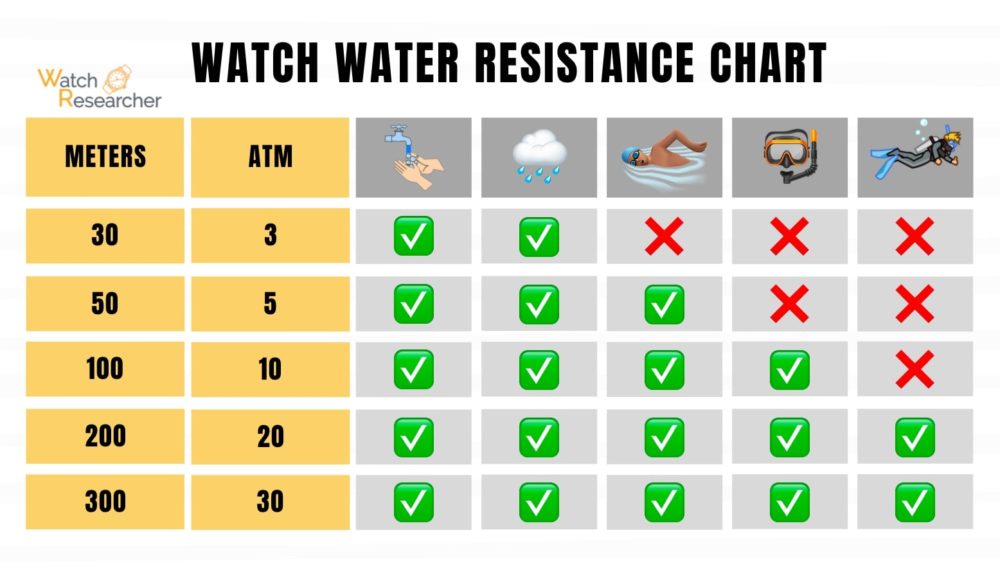
Healthy Tips
1) Don’t wear your watch when showering – unless you like to take cold showers without using any shampoos or shower gels, it is not a good idea to take your watch with you.
The thing is that watches and hot water don’t go well together because when the water cools down, the moist air absorbs into the watch case. When done constantly, the movement starts to degrade.
Another factor affecting the well-being of your watch is the use of shampoos and gels while showering. Since they consist of chemicals, they have a negative effect on the rubber gaskets and glues that secure the watch’s water resistance.
2) Don’t operate the crown (and pushers) underwater – the watch crown and pushers are the most vulnerable parts of watches where the water can intrude into the case. If they are operated underwater, you can be sure the watch is ruined for good.
Also, make sure the crown is pushed in (or screwed down) if dipping into the water.
3) The leather strap is not for water – out of all the types of watch straps, leather is the least suitable for water activities because of its porous characteristic. When it gets wet, it absorbs the moist into the pores and eventually deteriorates the structure.
In Conclusion
So, what to make of the watch’s water resistance rating?
First off, the resistance stated on the caseback and dial is not the depth you can submerge the watch because it is not tested in real-life conditions. The actual limitations are far more stringent when a 30m water-resistant watch withstands only splashes of water, and a 100m water-resistant watch should be used for swimming at the most.
Secondly, you have to differentiate between a water-resistant and a waterproof watch – the latter can actually withstand the pressure at the stated depth underwater. These watches are called dive watches that employ either ISO 6425 standard or have been tested by the watch manufacturers themselves.
Therefore, you should consider the extent you are going to use your watch in terms of water contact.
For example, if your lifestyle consists of long office hours or staying indoors, you should be okay with a 3 ATM or a 5 ATM timepiece. However, if you like to swim or exercise in other surface water sports, go for a 10 ATM or a 20 ATM watch. And finally, if you wish to take on scuba diving lessons in the near future, then a 30 ATM timepiece or ISO-certified dive watch is your best fit.
You may also like:
Affiliate Disclosure: As an Amazon Associate I earn from qualifying purchases. Details
- CIGA Design Blue Planet Gilding Watch: The Best Conversation Starter Around? - April 2, 2023
- CIGA Design X-Series Review: The Most Skeleton for the Money? - July 7, 2022
- What Is A Dive Watch? A Complete Guide - May 17, 2022

